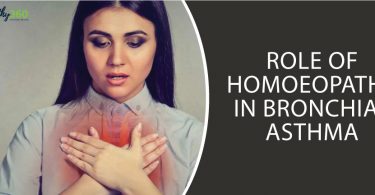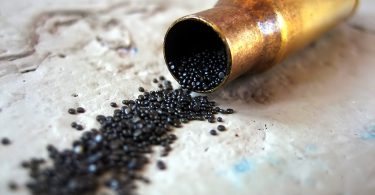
SYNONYMS : Rosacea, Rosacea acuminate, Gutta rosea, Bacchia rosacea
The term “rosacea” encompasses a spectrum of changes that occur mainly in the facial skin but may also involve the eyes.
There is a relationship between the tendency for facial flushing and the development of rosacea, may be because of response to heat, emotional stimuli, alcohol, hot drinks or spicy foods. Papules, pustules and telangiectases can become suerimosed on the flush.
The stages of rosacea can be divided into
- Pre-rosacea
- Flushing
- Facial vasodialatation speed up the development of rosacea
- Vascular rosacea
- Characterised by erythema due to increased erythrocytes in a mildly inflamed superficial vasculature.
- Increased blood flow insuperficial capillaries leads to collection of extracellular fluid.
- Chronic persistant lymphatic damage leads to facial oedema.
- In the late second stage, telangiectasia develops due to passive vasodialatation and angiogenesis.
- Vascularisation of cornea is responsible for ocular rosacea.
- Inflammatory rosacea
- Papules, pustules, nodules or plaques develops
- Late rosacea
- Includes development of rhinophyma
CLINICAL FEATURES
- The forhead, nose, chin, cheeks and eyes are commonly involved.
- Persistant telangiectasia remain between the episodes of acute inflammation.
- Exacerbations occurs with alcohol, sun, vasodialators and hot foods.
- Papules are non tender.
- Swelling – facial oedema
The American Rosacea Society Expert Committee grouped all clinical signs and symptoms of rosacea into

Rosacea is graded into

Rosacea may be complicated by various inflammatory disorders of eyes including keratitis, blepharitis, iritis and recurrent chalazion.
GENERAL MANAGEMENT
- Dietary adjustments
- Identification and avoidance of trigger factors
- Diligent photoprotection
- Concealing cosmetics
- Proper skin care
- Avoiding irritating cleansing products and procedures
- Using lukewarm water to avoid provocation of vascular reaction
- Avoid use of soap
HOMOEOPATHIC MANAGEMENT
- PLAN OF TREATMENT
Treatment of Rosacea generally involves avoidance of the factors which cause facial flushing. Homoeopathy is the best way to treat Rosacea as it helps to reduce the skin sensitivity towards the stimuli. Homoeopathic treatment of rosacea helps to reduce the dilation of blood vessels there by reducing flushing, redness and burning of the face. Each remedy is carefully prescribed after taking complete physical and mental history of the patient in treatment for rosacea.
THERAPEUTICALLY BASED REMEDIES WITH INDICATION
- Aconite: Red, hot flushed swollen face with one cheek red and the other pale with tingling and numbness
- Belladonna: Hot, red skin, flushed face, glaring eyes, throbbing carotids, excited mental state, hyperesthesia of all senses.
- Carbo vegetabilis: The facial skin appears blue, marbled and is very cold with cold sweat.
- Eugenia Jambos: Works in cases of simple and indurated/hardened acne. The acne and surrounding area is painful.
- Glonoine: Congestion, flushing and hot face worst by exposure to sun, heat and alcohol.
- Hydocotyle asciatica: There is growth of connective tissue over skin making it thickened and hardened.
- Psorinum: skin looks very dirty and the condition is worse from coffee intake.
- Vespa crabo: Face is red after eating with burning and swelling. Pain in cheek as if with red hot needles suddenly piercing during sleep
- Hepar sulphuris calcareum: Relieves pustular acne aggravated by cold weather, with a foul-smellingpus.
- Sulphur iodatum: Relieves acne located on the forehead and the back, aggravated by heat, and occurring periodically.
- Antimonium tartaricum: Acne with large pustules that are tender to touch, with bluish-red marks that remain on the skin after active infection has passed. The person may be irritable, with low resistance to illness
- Calcarea carbonica: Frequent pimples and skin eruptions is chilly with clammy hands and feet, easily tired by exertion, and flabby or overweight. Very anxious when overworked, and have cravings for sweets and eggs
- Pulsatilla: Acne is worse from eating rich or fatty foods, and aggravated by warmth or heat. Used for acne in young girls that is associated with the onset of puberty. Associated with the menstrual period (especially when the period is irregular or absent) or with pregnancy. Person often has a fair complexion and is inclined toward soft emotions and moodiness, feeling worse in warm or stuffy rooms and better in fresh air
- Silicea: Deep, hard, cystic acne, such as boils on the face (especially the cheeks). Pimples that often do not come to a head or show pus. Pimples that are very slow to heal and leave pitting scars. Acne affecting the forehead. Pustular acne.
- Kali bromatum: Used to treat acne that begins in the teen years and continues into adulthood. Bluish, red pustules on the face, chest and shoulders that leave scars. Purple spots or a depression in the skin. Pimples that may have a depressed center or be painful. Large, red cysts with a white or yellow center. In females, the acne may be worse near their menstrual period. Chest, shoulders and facial acne. It is generally marked by a persistent itch. The acne might be indurated, pustular or simplex. Purple tinged acne.
REFERENCE
- IADVL text book of dermatology- 4th edition 2015 – s.sacchidanand – vol 2 – bhalani publishing house, Mumbai, india
- Rooks text book of dermatology – vol 3- 9th edition – willey Blackwell publishers Christopher e m Griffiths. , jonathan bar
- Ralston S, Penman I, Strachan M, Hobson R, Britton R, Davidson S. Davidson’s principles and practice of medicine. 21st ed. Edinburgh: Elsevier; 2010.
- Cecil R, Goldman L, Schafer A. Goldman’s cecil medicine. 24th ed. Philadelphia: Elsevier/Saunders; 2012.
- Anthony Fauci., Eugene Braunwald., Dennis Kasper., Stephen Hauser., Dan Longo., J. Jameson. et al. Harrison’s principles of internal medicine. 20th ed. New York: McGraw-Hill Education; 2018.
- Papadakis M, McPhee S, Rabow M. 2015 current medical diagnosis & treatment. 54th ed. New York: McGraw-Hill Education; 2015.
- Schroyens, Frederik. (2007). The essential Synthesis 9.2E. New Delhi: B Jain Publishers Pvt. Ltd.
- Zandvoot van Roger. Complete Repertory. New Delhi: Indian Books & Periodicals publishers; 2011
- Murphy, Robin. (1994). Homoeopathic Medical Repertory. 1st Indian edition. New Delhi: Indian Books & Periodicals Syndicate.
- Murphy R. Lotus Materia Medica. 3rd Edition. Noida, UP: B Jain Publishers (P) Ltd; 2017.
- Lippe Von Adolph. Keynotes And Redline Symptoms Of The Materia Medica. 8th Impression. Noida, UP: B Jain Publishers (P) Ltd; 2018.
- Boericke William. Boericke’s New Manuel of Homoeopathic Materia Medica with Repertory. 40th Impression. Noida, UP: B Jain Publishers (P) Ltd; 2017.
- Clarke Henry John. A Dictionary of Practical Materia Medica, Vol II. 33rd Impression. Noida, UP: B Jain Publishers (P) Ltd; 2017.





